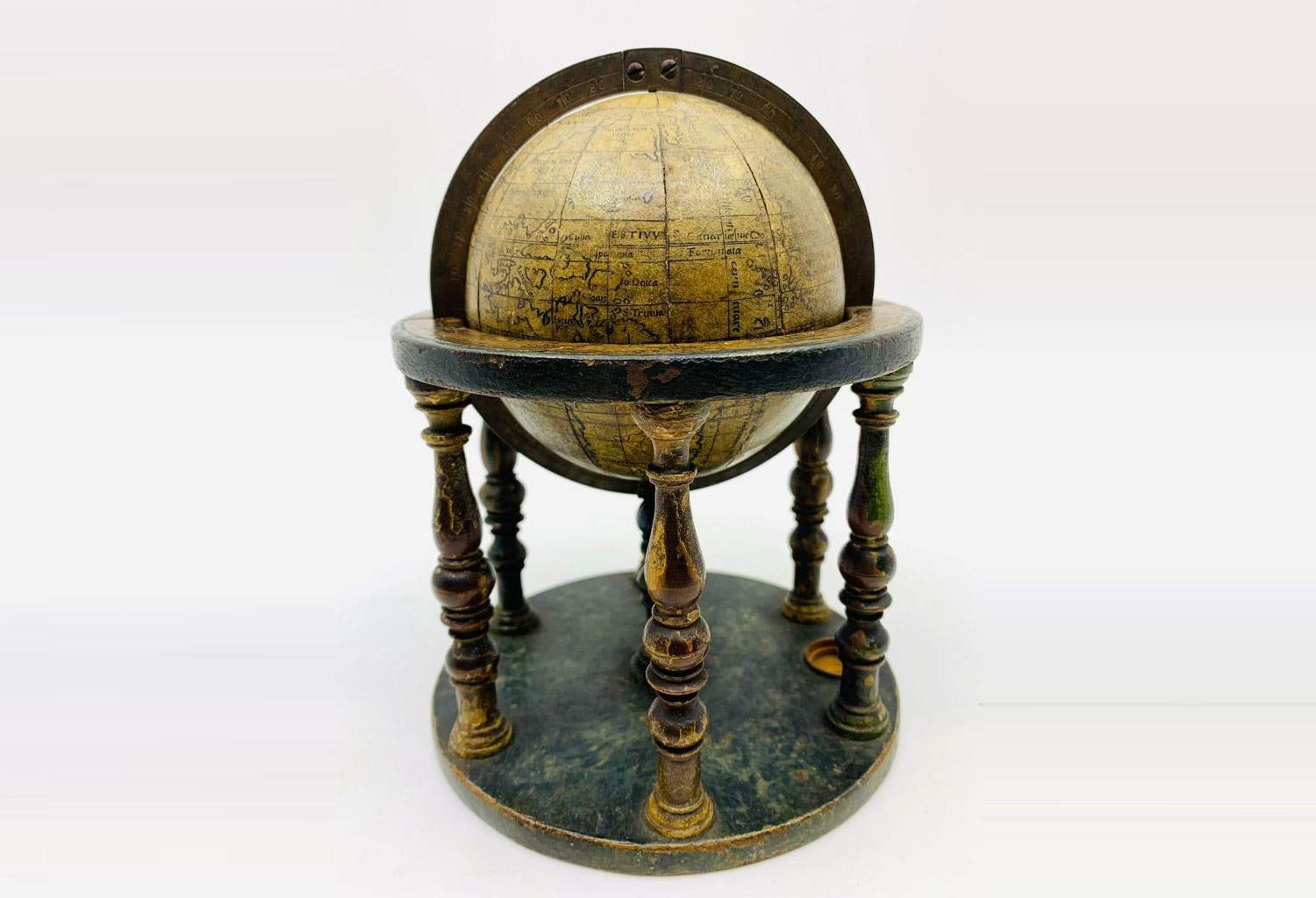Woman buys a globe for 175 , but it is a rare item and is auctioned at 136,000
A real stroke of luck happened to a Welsh lady who, during the Covid-19 pandemic, had purchased an antique globe at an antiques fair in Wales for only 150 pounds (about 175 euros): that globe in fact turned out to be a rare piece from the 16th century, and it was auctioned at Hansons House in London for the sum of 116,000 pounds (about 136,000 euros). It is in fact a globe from about 1550, the work of the French geographer François Demongenet or his circle, and described as “one of the rarest objects ever discovered by Hansons,” so much so that the house had already proposed an estimate of 20-30,000 pounds. A figure later quadrupled when the hammer was struck: to win the work, a New York collector who attended the auction remotely. It is one of the oldest known globes: the oldest known is theErdapfel of 1492, a work by Martin Behaim kept at the Germanisches Nationalmuseum in Nuremberg. It is followed by the Ostrich Egg Globe of 1504 and the Hunt-Lenox globe of about 1510. Sixteenth-century globes are very rare and difficult to come by on the market-that explains the high sum for which it was purchased.
“And to say I thought I had spent so much when I bought it for 150 pounds during the pandemic,” said the lady who bought it. Then, the decision to take it almost as a joke to have it evaluated by Hansons at its Biston Hall location in Staffordshire, and the surprise after the experts’ estimate. “I had no idea that it was so important and valuable. I watched the auction with a friend, my husband, and a glass of wine. My friend was crying, I was in shock, and my husband was totally and utterly stunned. Needless to say, I was happy.”
“The owner,” said Jim Spencer, Hansons’ works-on-paper expert, “brought a number of items with her for appraisal and was not sure if the globe was anything significant. I expected to see a modern reproduction, but was immediately struck by the engraved segments, a sign that it was an authentic antique globe.”
The globe depicts the world before Australia was discovered by Dutch explorer Willem Janszoon in 1606. The brand new continent appears as part of a cluster of southern lands called “Terra Incognita” in Latin. Japan is called “Sipannge,” the islands near Java are called “Gryforum Insule,” North America is marked as “Devicta ann 1530” (i.e., “discovered in the year 1530) and South America is marked as ”Nova Terra Inventa anno 1492“ (”New Land Discovered in the Year 1492“) and also marked by the notice ”Canibales Tropophagi."
“The age of the globe is mind-boggling,” said Jim Spencer. “People were wearing ruffs when they first handled this globe in Elizabethan England. The globe also includes representations of sea monsters because, at that time, people believed that fantastic creatures lived beneath the waves. In 1583, English explorer Sir Humphrey Gilbert claimed to have encountered a lion-like monster with ’dazzling eyes’ during a voyage. There were so many places at that time that had not yet been explored. It is amazing to think of all the historical events this delicate little globe has survived. Besides having gone through two world wars, it was made a century before the Great Fire of London in 1666. To me, it looked like a museum piece. The globe, which has 12 segments engraved a dotted effect on the seas, monsters, ships and a representation of the Greek sea god Triton, was originally in the collection of Major Edward Croft-Murray (1907-1980), former Keeper of Prints and Drawings at the British Museum. I guess we will never know how Major Croft-Murray acquired the globe, but we do know that he was one of the ’Monuments Men’ who rescued all sorts of treasures during the war.”
Charles Hanson, owner of Hansons Auctioneers, said, “The battle that went on at auction for this globe was something unique, and deservedly so. It is one of the most important historical finds Hansons has ever made.”
Pictured is the globe
 |
| Woman buys a globe for 175 , but it is a rare item and is auctioned at 136,000 |
Warning: the translation into English of the original Italian article was created using automatic tools. We undertake to review all articles, but we do not guarantee the total absence of inaccuracies in the translation due to the program. You can find the original by clicking on the ITA button. If you find any mistake,please contact us.





























